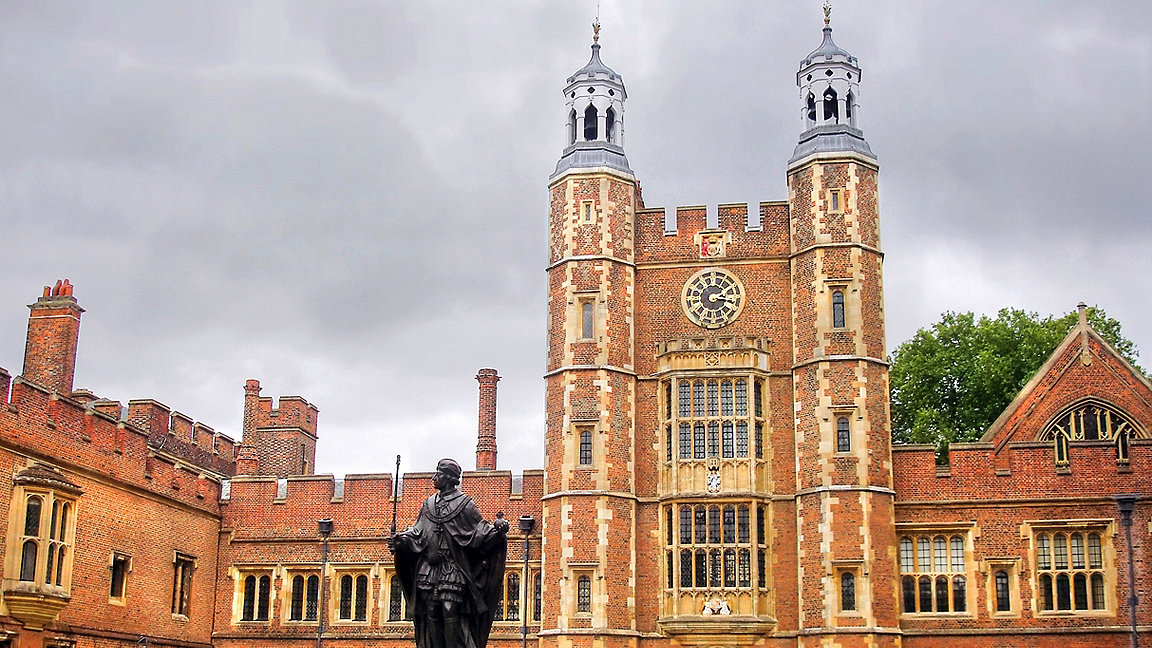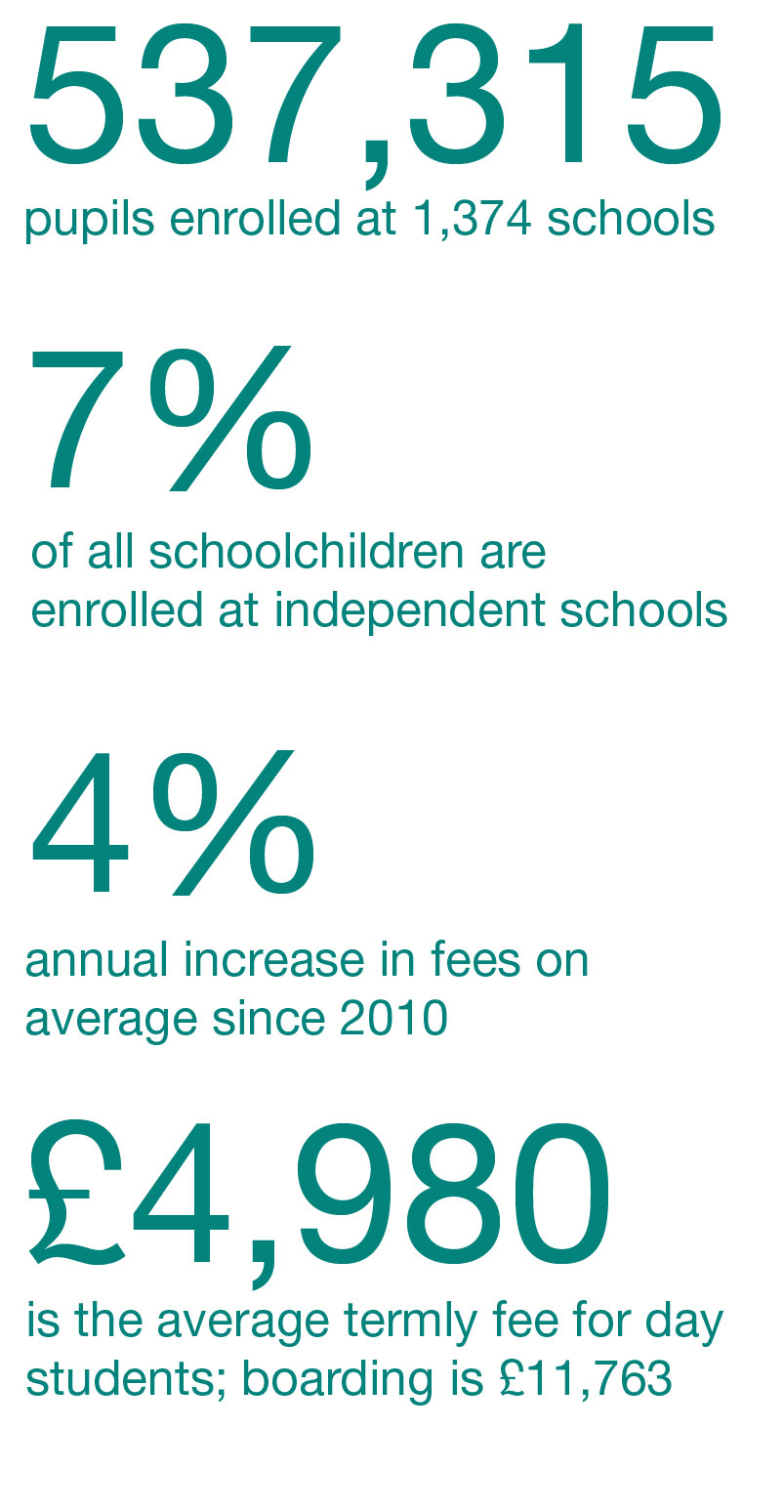
Compared with many other property sectors, the UK independent schools market is tiny and rarely traded. However, despite its size the past few years have been some of the most active ever.
- Independent schools have a diversity of owners, with at least 60% being owned by individual charitable trusts. Organisations have started to emerge with the aim of consolidating and expanding schools groups, and the level of transactions has increased in recent years.
- The reputation of UK independent schools has remained very strong internationally, and several international buyers – particularly those from Asia – have acquired at least 17 schools in the past few years. These acquisitions have typically been struggling charitable schools with boarding provision.
- Property investors have increasingly been attracted to the independent schools sector by the good-quality freehold properties that are available and the relatively stable cash flows the school businesses provide. Sale and leaseback and ground-rent transactions are proving popular.
COVID-19
COVID-19 has adversely affected the independent schools sector. Fees for summer term 2020 were generally reduced, as teaching was largely conducted online, extra curricular activities were restricted and there were some increased costs, for example, for enhanced cleaning regimes. The government's furlough scheme and other support partly mitigated the impact of discounted fees.
Nonetheless, independent schools continue to be a resilient sector because all children require education and demand has tended to hold up well, in part due to the perceived superior teaching such schools are generally able to offer.
Existing, well-performing schools have remained in good shape, while closures of weaker and failing schools have accelerated. At least ten schools closed in summer 2020 or were forced into sales, and further failures are expected this summer.
Despite the economic challenges in the sector, in part caused by the pandemic, buyer demand is also at its strongest. In turn, this means there is also considerable demand for valuers.
How are schools valued?
The initial questions a valuer asks are: what are we valuing, and for what purpose? They may need to value the whole school, or surplus property at the periphery, or only the playing fields. Such valuations may be for the purposes of loan security, financial reporting, acquisition, disposal, compliance with the Charities Act 2011, rent review or lease renewal, business rates or capital gains tax.
Market value is the most commonly used basis of valuation, and reflects the price that can be realised between a willing buyer and a willing seller after a reasonable marketing period. This value is used for loan security, acquisition and disposal purposes. Fair value, which often equates to market value, is used for the purposes of the International Financial Reporting Standards (IFRS).
The term bricks-and-mortar value is commonly used as well, although in effect this is the market value with vacant possession; that is, if the school closed.

Varied valuation methods
In practice, there are several approaches for valuing a school according to the circumstances.
-
Comparative method (market approach)
Evidence of freehold and leasehold transactions of other schools and similar properties is analysed, adjusted and applied to the subject property, usually on a per-square-metre basis. Adjustments would be made to reflect location, size, condition, any legal or planning restrictions, and facilities such as sports pitches.
-
Profits method (income approach)
The valuer's job is to assess the fair maintainable trade expected from the subject property, as a fully equipped trading entity operated by a reasonably efficient operator that is assumed to have a profit motive. The valuer then applies a capitalisation yield to their assessment of Fair Maintainable Operating Profit (FMOP), which is informed by market transactions. As with all properties valued on an income approach, knowledge of the trading performance of other schools which have been transacted is important when undertaking analysis of the year's purchase (YP) multiple. It is certainly helpful to be involved in the market transactions or have agency colleagues who are, in order to value trading schools.
-
Depreciated replacement cost (DRC), or cost approach
This is more commonly used for state schools, but may occasionally be adopted in financial reporting for a few independents, if the valuer considers that the property is of a scale or nature which has rarely, if ever, been traded in the open market. The approach is based on the current cost of building a modern equivalent replacement school, including acquiring a suitable site less deductions for physical deterioration and all relevant forms of obsolescence and optimisation.
-
Residual method
Vacant school assets may be assessed having regard to market demand and pricing for a continuation of their existing use, as well as the so-called hope value for any higher-value alternative use or redevelopment potential. The valuer assesses the gross development value for a realistic redevelopment scheme and deducts development, finance and sale costs and an appropriate developer's profit. The residual land value is then adjusted for planning and other risks.
-
Reinstatement cost assessment (cost approach)
It is a common misconception that the cost of rebuilding the school premises, which is used for insurance purposes, is similar to its market value. It is not, and the two figures are rarely close.
Transactional evidence
A particular challenge for valuers of schools is the dearth of evidence on transactions of school properties, which means that we tend to have to assess evidence over a wide geographical area and date range.
There is plenty of rental and capital value evidence in the London area. But outside the capital there is virtually no evidence of rents from arm's-length transactions of large school properties. This therefore means a far greater degree of professional judgement is required than for other mainstream commercial sectors.
Rents and rent reviews tend to be determined based on net internal floor areas, while proximity to affluent residential areas has a significant influence on value. Occasionally, the rent level is cross-checked as a proportion of FMOP, and rent covers should ideally be in the range of 2.25 to 2.5 times for a vacant letting, to make allowance for the risks, costs and time in developing a new school to maturity.
In central London, many rents are in the range of £375 to £540 per square metre, in outer London £160 to £215, and regionally between about £32 and £130, with outliers to all of these ranges. In part, central London can support significantly higher rates because schools here accommodate much greater pupil numbers in smaller premises. In prime central London locations, capital values can be up to about £10,800 per square metre with a few higher outliers, but only around £320 to £1,075 in the regions.
I tend to value vacant school properties having regard to the limited transactional evidence and then cross-check against residuals for alternative use and development. Sometimes I also use a DRC as well, and an assessment of the trading potential, making allowance for the time it takes to develop a school business to maturity. I also consider the potential value that could be realised from a sale and leaseback.
- Where profitable schools are sold to for-profit providers, the FMOP is commonly capitalised – for freehold schools – at YP multiples between about ten and 15, before accounting for central management costs and sustaining capital expenditure. The higher multiples would tend to be used for London prep schools. Less profitable regional schools may attract the lower multiples.
- Where the school is operating at a low margin or is loss-making, a charitable trust may choose to sell assets. The key determinant of the value as a trading entity is the underlying vacant possession value of these property assets, making allowances for working capital and the investment required to help the business make the transition to expected levels of profit.
Planning use and policies
Schools are usually protected by planning policy as community uses, and their loss is normally resisted by council planning departments. However, through social, economic or demographic change, schools become surplus and local authorities may then consider alternatives, if they are satisfied that there is no ongoing demand in the existing use.
Establishing this requires detailed investigations, and the valuer needs to make a judgement in assessing the likelihood of higher-value alternative uses, taking account of the risk, costs and delay in gaining planning permission.
Playing fields can be a particular issue of uncertainty as their loss is usually opposed by the government agency Sport England, which is a statutory consultee for planning applications, and planning policies often seek to protect open space and recreational facilities. If playing fields can be developed for housing, however, then the scale of development and value can be substantial.
Day schools have been classified as falling in use class D1 of the Town and Country Planning (Use Classes) Order 1987 and boarding schools class C2. However, on 1 September 2020 the government made significant changes to the order in the Town and Country Planning (Use Classes) (Amendment) (England) Regulations 2020, abolishing class D1 among other revisions. Day school uses now fall in the new class F1, which includes schools, non-commercial galleries, museums, libraries, public halls, places of worship, and law courts. Class C2 is unchanged.
'Outside the capital there is virtually no evidence of rents from arm's-length transactions of large school properties'
Attractive prospects
It often proves rewarding to value school properties: they have an interesting history with unique characteristics and ethos, and can include listed buildings in attractive settings.
Valuing vacant school properties is a relatively opinion-led process, but a review of comparable evidence, an assessment of the trading potential, consideration of a possible sale and leaseback, development appraisals to estimate the alternative use value and sometimes a consideration of replacement costs will provide a sound basis.
Underlying demand remains strong in the independent schools sector despite the pandemic, which means investor interest is growing, the market is maturing and transactions are increasing in number.
Richard Moir, MRICS, is partner and head of alternative markets team at Gerald Eve LLP
Contact Richard: Email
